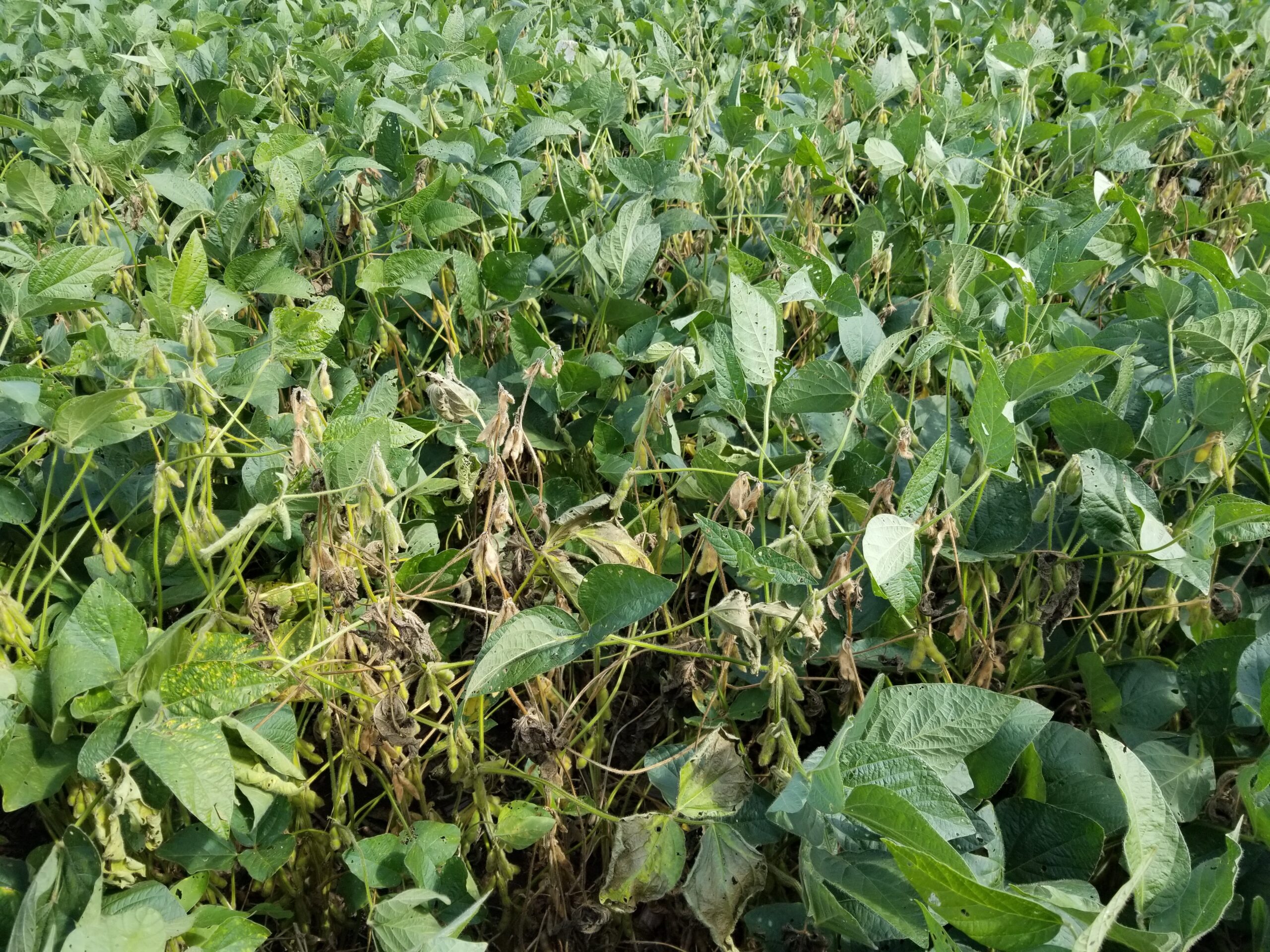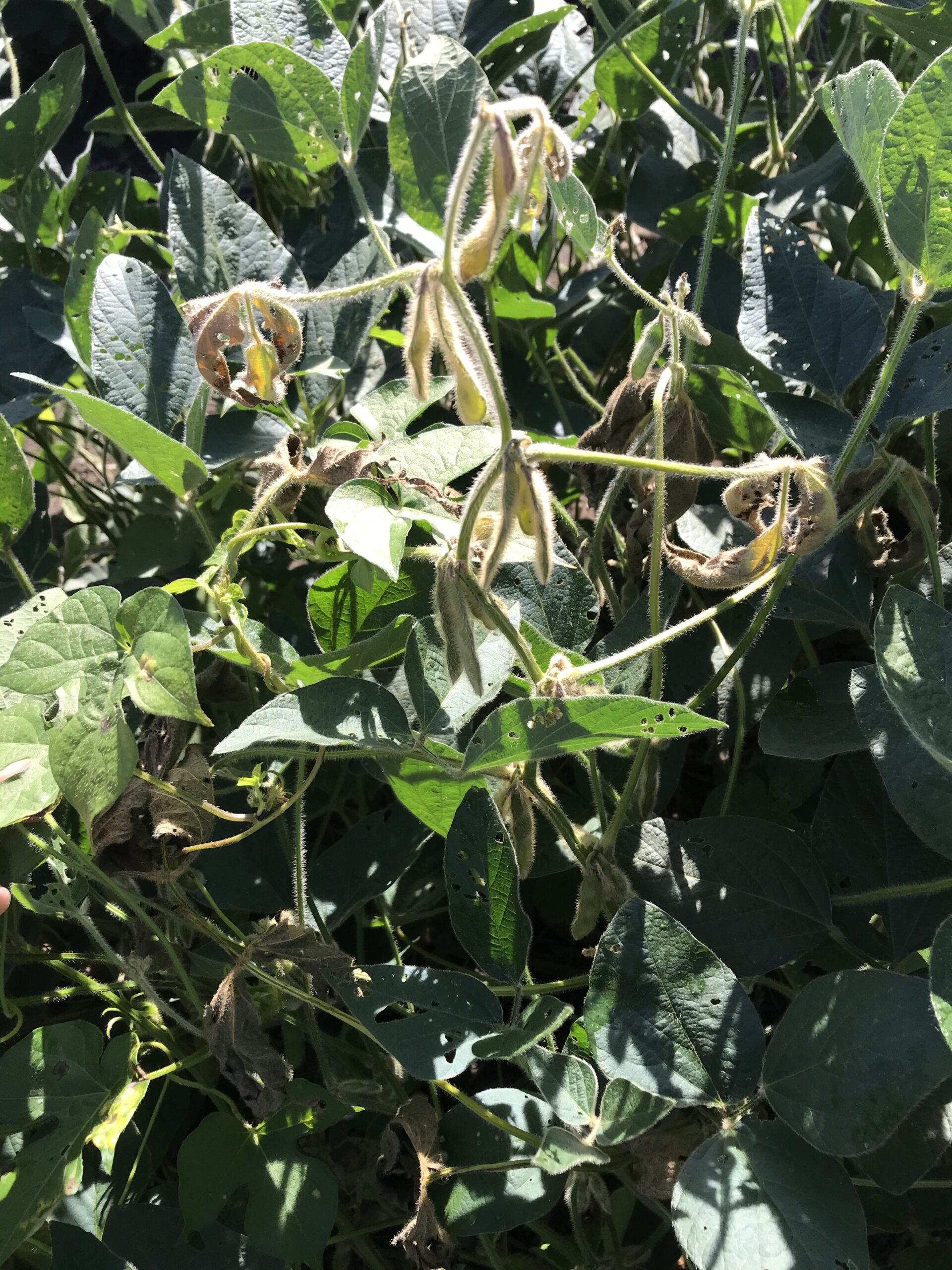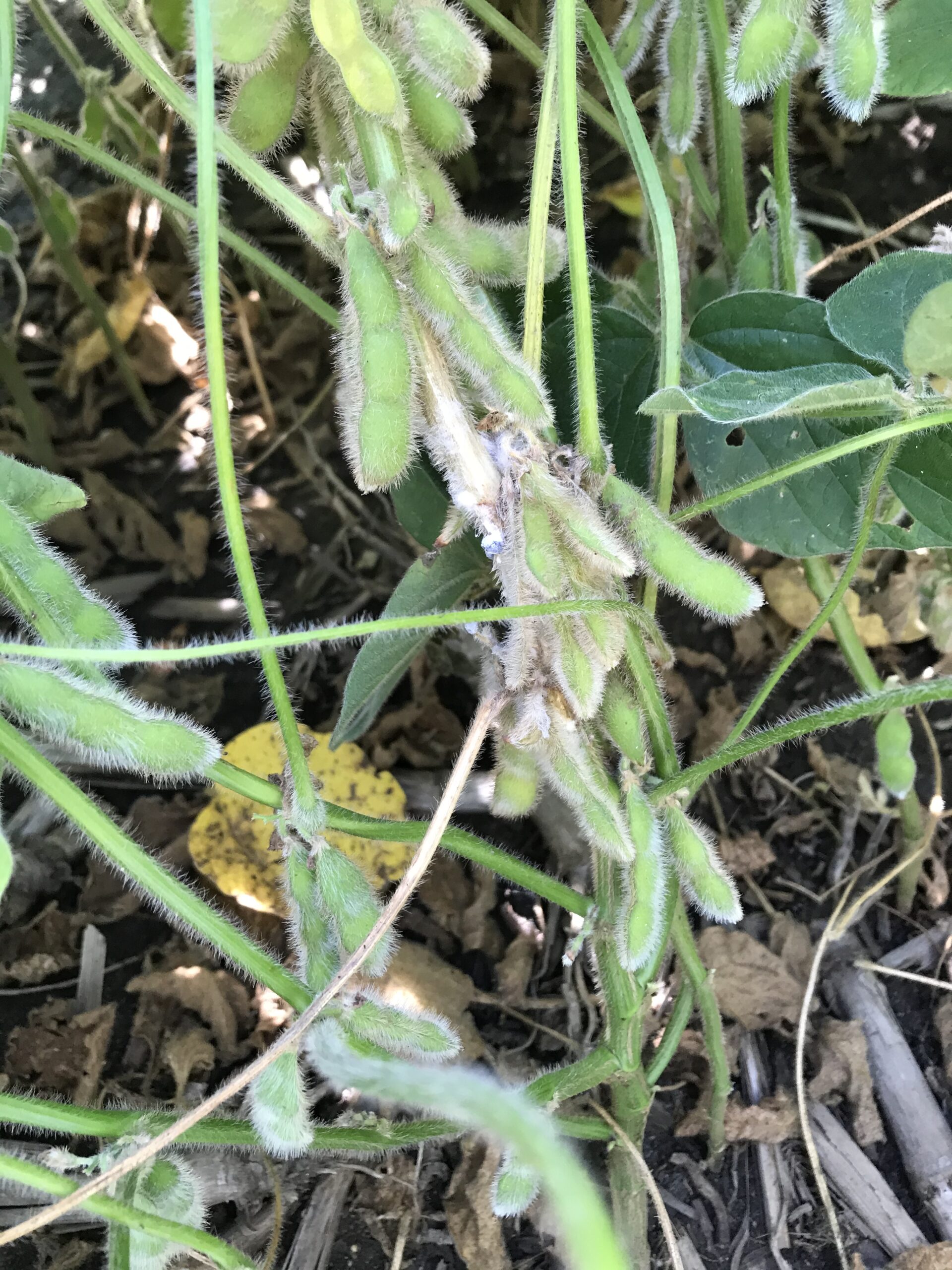Sclerotinia sclerotiorum is a soilborne pathogen of soybean that causes Sclerotinia stem rot, alternatively called white mold. Sclerotinia stem rot can cause significant yield losses under cool and wet environmental conditions. Current management practices include selecting a resistant variety, increasing row spacing, decreasing planting populations, and rotating to a non-host crop as well as the application of synthetic foliar fungicides at the beginning reproductive stages.
Sclerotinia stem rot should be controlled using an integrated disease management strategy in order to delay the development of resistance in S. sclerotiorum populations. Biofungicides, a microbial or biochemical product used to control or limit the activity of a pathogen, can be applied in place of synthetic fungicides to provide additional modes of action. Two biofungicides, Coniothyrium minitans and Bacillus amyloliquefaciens, are currently available and labeled to limit or suppress S. sclerotiorum in soybean.
However, limited information is available regarding the efficacy of C. minitans and B. amyloliquefaciens as biocontrol agents of S. sclerotiorum in soybean and the sensitivity of the biofungicides biological activity on S. sclerotiorum to pesticides commonly used in soybean production systems. This research aims to provide management recommendations for S. sclerotiorum in soybean using C. minitans and B. amyloliquefaciens and to develop guidelines for how to incorporate the biofungicides into an established soybean pest management program.

Figure 1. Field with moderate S. sclerotiorum disease pressure.
Photo credit: Audrey Conrad and Dr. Darcy Telenko, Purdue University


Figure 2. Plant displaying classic white mold symptoms of wilting and premature senescence of leaves.
Figure 3. Mycelium and sclerotia of S. sclerotiorum on stem of soybean plant.
Photo credit: Audrey Conrad and Dr. Darcy Telenko, Purdue University